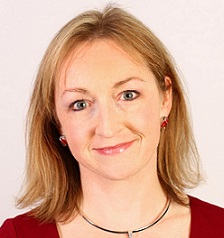
By Suzanne Cogan,VP of Sales and Client Relationships, Orion Health USA
Twitter: @suzcogan
Twitter: @OrionHealth
Here in America, we are beginning to accept the fact that our healthcare system is not sustainable as it currently stands. With an aging population and fragmented, disparate, and oftentimes redundant care, our country is wasting over $910 billion every year (Berwick & Hackbarth, April 2012) on failed care coordination, over-treatment, administrative complexity and other factors. However, with the advent and adoption of comprehensive population health management technology and a systematic shift toward value-based care, much of this waste can be eliminated. Some innovative provider organizations are partnering with payers in new, value-based models of care. However, in order to make this new model of care work, they need sustainable infrastructure that enables quality, coordinated care and reduced financial risk.
In a June 2014 presentation by the HIMSS Clinical & Business Intelligence Community, “Accountable Care Obstacles: The Holy Grail of Value-Based Analytics and Why We Aren’t Close Yet” presenters suggest that the ‘holy grail’ of value-based analytics is a centralized electronic health record (EHR) system with embedded population health management capabilities. While we agree that the industry needs a system that integrates clinical, claims, and patient-reported data to provide a more holistic view of a patient, a centralized EHR is not a realistic way to accomplish this. With value-based care models and their implicit need to understand all of a patient’s healthcare comes the need to acquire data from all of the providers the patient may see, including PCPs, specialists, home care, long-term care, and so on. It is unlikely that all of the providers in the patient’s circle of care will be able to use one centralized EHR. Further, as mergers and acquisitions of provider organizations continue, it is even more unlikely that centralized EHRs will be the norm. How can an HCA hospital running its parent corporation’s standard Meditech system be expected to be on a centralized EHR system with the surrounding hospitals and practices in its community?
We need platforms at the community level that aggregate all patient data in one secure place so that providers can view a more complete patient profile and prescribe shared care plans accordingly. The community-wide platform is a catch-all database that could funnel all of the relevant information to the right people, at the right time. The true Holy Grail is the integration of clinical and claims data all in one place.
About the Author: Suzanne Cogan is Vice President of Sales and Client Relationships, Orion Health USA. Suzanne has more than 15 years of experience in healthcare information technology, including sales and leadership positions in both the ambulatory and acute care segments of the healthcare market. This article was originally published on Orion Health Blog and is republished here with permission.
